|
|
North Carolina’s youth suicides increased by more than 50% from 2019 to 2020, according to the latest data from the state’s Child Fatality Task Force (CFTF). The task force, which met Dec. 6, reported that suicide by firearm was most common.
Kella Hatcher, executive director of CFTF, called those numbers “a sobering piece of data to look at.”
2019 had marked a decrease in youth suicides, which have generally trended upward. In 2011, the state reported 23 suicides among children under 17. By 2020, that number was 56.
The broader firearm-related mortality rate in North Carolina has also increased dramatically among children under 17 — nearly doubling since 2019.
But legislative recommendations from CFTF regarding firearms were unsuccessful. House Bill 427 would have required the state’s Department of Health and Human Services (DHHS) to launch an awareness initiative to educate the public about the safe storage of firearms and to facilitate gun lock distribution. The bill — whose primary sponsors were all Republicans — passed one vote shy of unanimous approval in the House. It was included in this year’s House budget, but was left out of the Senate budget and the final budget.
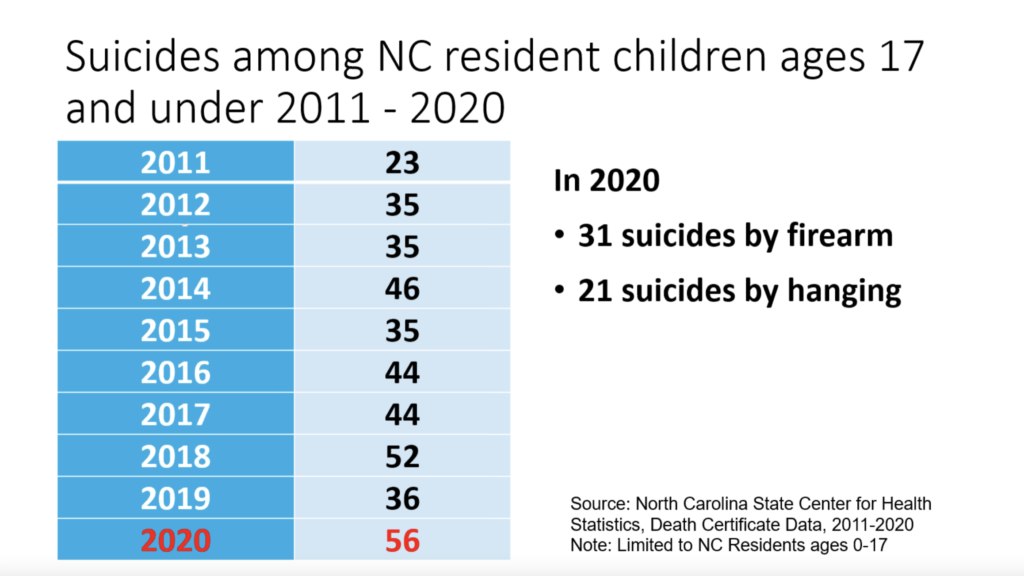
Other legislative updates
In addition to HB 427, CFTF reported a number of other recommendations for legislation that were not successful. Those included:
- Senate Bill 703 Child Fatality Prevention System Strengthening.
- Senate Bill 537 Expand NC Infant Safe Sleep Program/Funds.
- House Bill 473 Revise Laws/Safe Surrender/Infants.
- Senate Bill 535 Safe Surrender Infants.
However, the task force’s recommendation for ignition interlocks for all DWI offenders, SB 183, was signed into law by Gov. Roy Cooper on Nov. 18. Ignition interlocks prevent drivers from starting a car until they complete a breathalyzer test that measures their alcohol content to be under an approved level. Increased funding for more school nurses, social workers, counselors, and psychologists was also recommended by CFTF and passed in this year’s budget.
Center for Fatality Review & Prevention
The task force meeting also included a presentation from the National Center for Fatality Review and Prevention (CFRP). The center operates a national fatality review case reporting system, which helps states and the federal government analyze and evaluate data to help curb child deaths.
At present, 47 states use the center’s case reporting system, which is paid for by the federal government. Maine, North Carolina, and Vermont do not.
“It would make a tremendous difference,” said Karen McLeod, the task force’s chair, of the case reporting system.
Hatcher agreed.
“I think when we started examining how we could improve our child fatality prevention system,” she said, “we very quickly zeroed in on the fact that this would in fact be a really, really great tool and honestly a game-changer for us understanding child death data in our state.”
Implementing North Carolina’s participation in that case reporting system was part of SB 703, which did not advance after being filed in the Senate in April 2021.
Infant death racial disparity persists
Infants represented 63% of child deaths across the state in 2020, with 6.9 deaths per 1,000 births — about the same rate as 2019. North Carolina had one of the highest rates in the country that year. National data from 2020 is not yet available, said Kathleen Jones-Vessey, a maternal and child health epidemiologist with the DHHS’ division of public health.
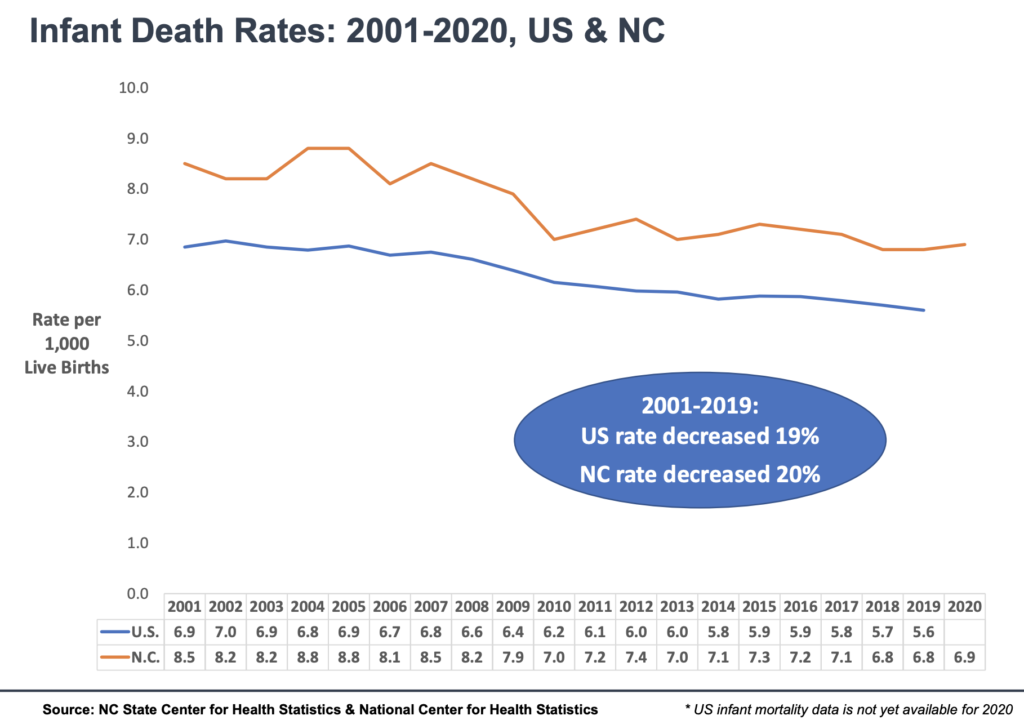
The overall state rate has declined by 20% in the last 20 years, but the racial disparity in rates has slightly risen. Black babies were 2.67 times more likely to die in the first year of life than white babies in 2020; that number was 2.52 in 2001.
Reducing this disparity is one goal in the North Carolina Early Childhood Action Plan released in Feb. 2019. The disparity is reflected in the leading cause of infant deaths: prematurity or low birth weight. Black babies were more likely than babies of any other race to be born prematurely or at low birth weights.
The other top reasons for infant death were birth defects and “other conditions originating in the perinatal period.”
In 2020, eastern counties had the highest infant mortality rate at 9.2 deaths per 1,000 live births.
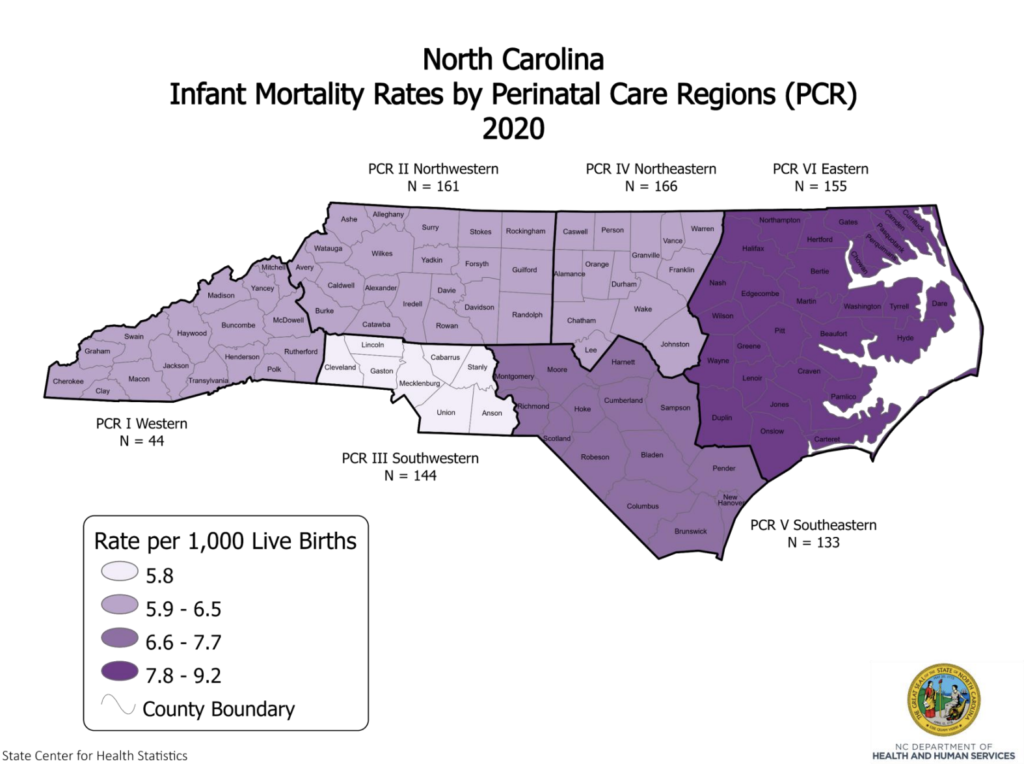
In the last four years, counties in the eastern and northwestern regions of the state had the highest infant morality rates. In the same period, northeastern counties had the highest racial disparity in infant deaths, as shown in the following two maps.
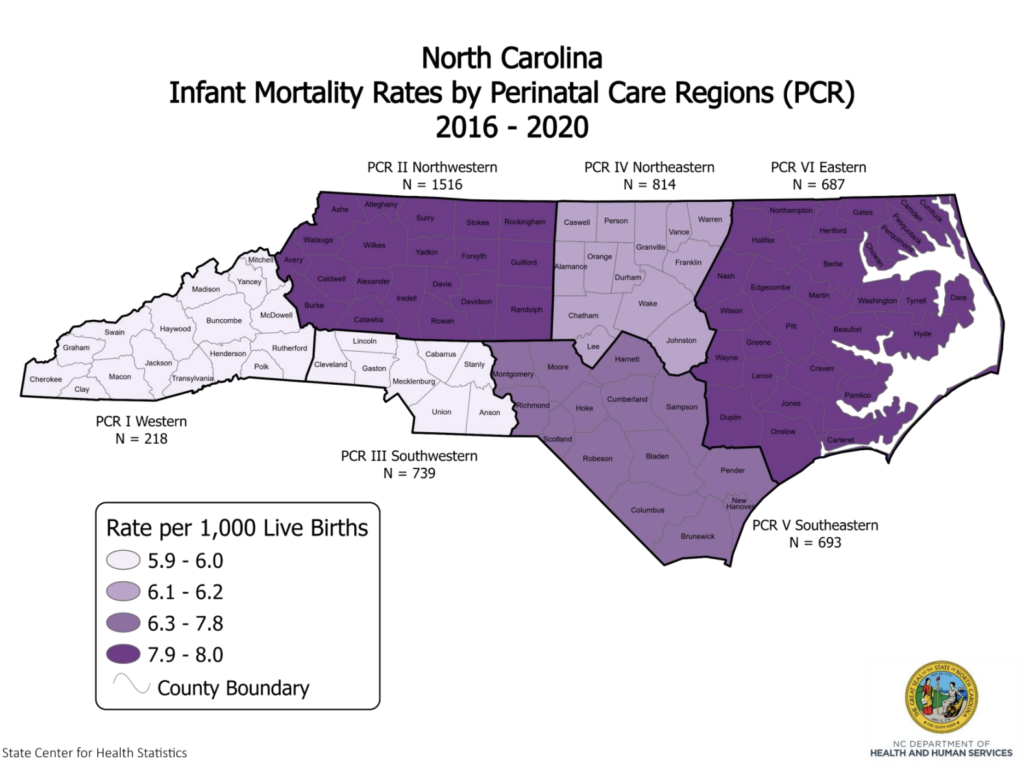
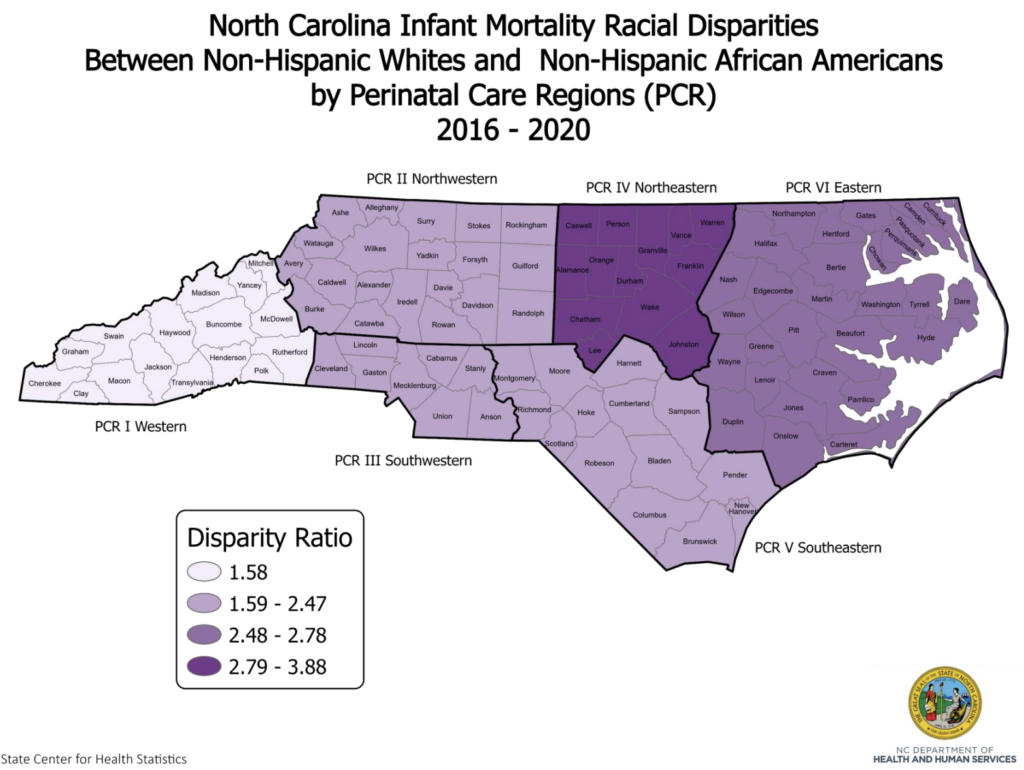
If you are having thoughts of suicide, call the National Suicide Prevention Lifeline at 1-800-273-8255 (TALK). You can find a list of additional resources at SpeakingOfSuicide.com/resources.






